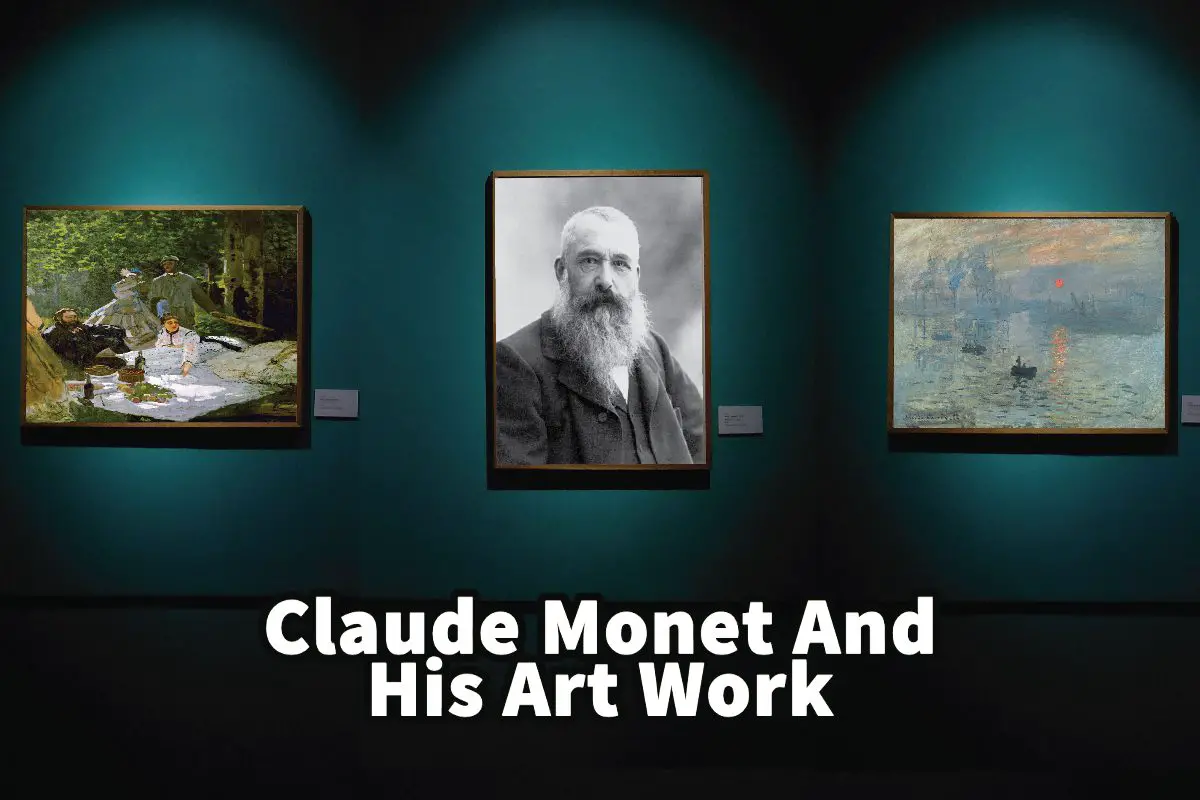When most people think of Claude Monet, they think of the Impressionism art movement. Monet was one of the key personalities of the Impressionism movement.
Claude Monet was one of the more prolific and consistent Impressionism painters. He was a great believer in painting what is in nature and painting the changing light. He was an en Plein air painter. He is known for his strong and bold colors and short brush strokes. You can not study Impressionism without studying and learning about Claude Monet; he continues to be one of the vital Impressionism painters of all time.
Table of Contents
- About Claude Monet
- Giverny and Monet’s Art Work
- Monet Was The Master Of Light And Color
- Frequently Asked Questions
- Related Questions
About Claude Monet
Claude Monet is also known as Oscar-Claude Monet or Claude-Oscar Monet; he was born on November 14, 1840, and died on December 5, 1926.
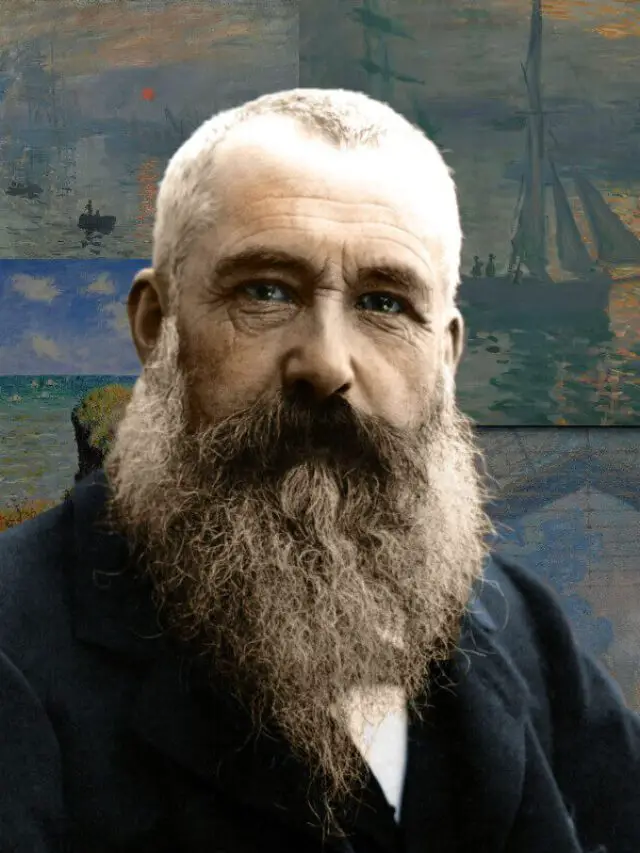
Monet is considered the founder of French impressionism painting and was also the most consistent and prolific painter in the impressionist movement. He believed in the philosophy of expressing one’s perceptions before nature, mainly as applied to en Plein Air landscape painting and the painting of changing light.
Monet Broke From Artistic Tradition
When Monet visited the Louvre in Paris, he noticed many other painters sitting before the master’s paintings and trying to copy the images precisely. Instead of replicating those paintings, Monet sat by the window and painted what he saw outside.
He was in Paris for several years, and that is where he saw and met other painters and became friends with fellow impressionists; one of those friends was Edouard Manet.
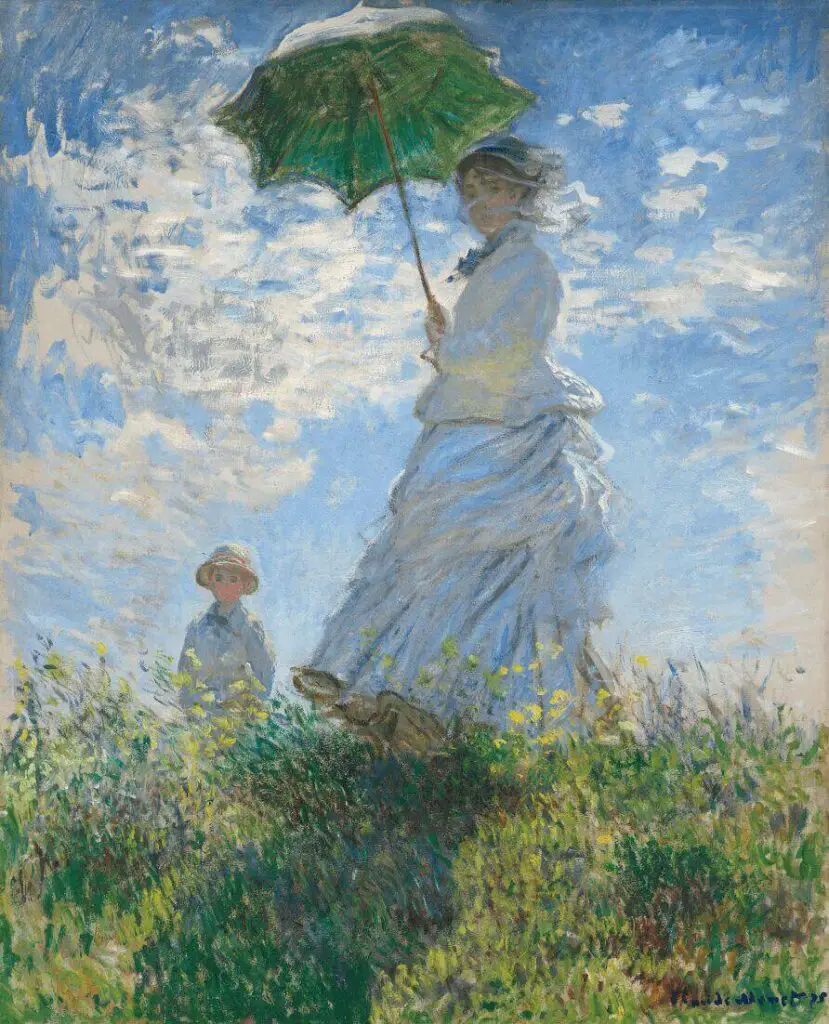
Studied Works of Constable and Turner
In 1890, Monet decided to take refuge in England during the Franco-Prussian War. While there, he studied the works of John Constable and Joseph Mallord William Turner. Both of their landscape artists inspired Monets to explore color and how they painted nature.
From 1871 to 1878, Monet lived in France and visited Holland. One of his most famous paintings is Soleil Levant, which means the impressionism sunrise. When he put it in the exhibition in 1874 in Paris, it was from this painting that the impressionist movement received its name.
First Wife Died and Later Remarried
In 1870, he married Camille Dobcueux. By 1976, after giving birth to two children, she became ill. By 1879, she had died of tuberculosis; Monet painted her on her deathbed.
After the difficult months following the death of his beloved Camille, Monet was grief-stricken. But he also resolved that he would continue painting and continued to paint some of the best paintings of the 19th century.
Later, in 1892, Claude Monet remarried Alice Hoschede, whom he had known for a long time; Alice helped him raise his two sons and her other children.
Giverny and Monet’s Art Work
In 1883, Monet, Alice, and their large family rented a house on two acres from a local landowner. The house is situated on the main road at Giverny.
There was a large barn that also doubled as his painting studio. The property had orchards and a small garden. The surrounding landscape offered Monet a lot of suitable places to paint.
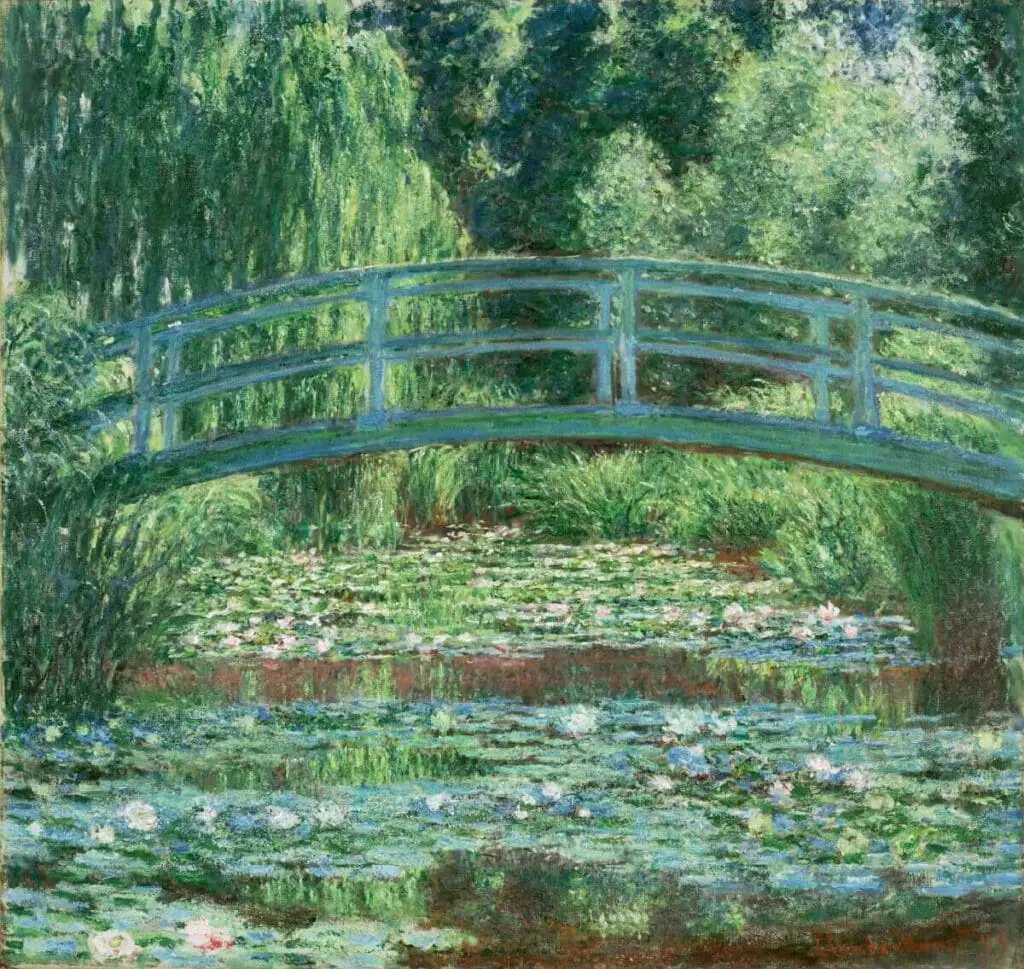
Monet’s Fortunes Began To Change
The family worked and built up the gardens. Monets’ fortunes also began to change. His art dealer, Paul Durand-Ruel, successfully sold Monet paintings.
By 1890, Monet was prosperous enough to buy the house and the surrounding buildings and land for the garden. Within a few years, he also started to build greenhouses, a second studio, and other spacious buildings.
Giverny Became Monet’s Main Art Studio
Giverny became Monet’s main painting studio for the rest of his life. He traveled to the Mediterranean, Venice, Italy, and London to paint, but most of his painting was done in Giverny and the surrounding area.
Later in his life, Monet developed cataracts. Cataracts, of course, would have affected his painting. He died in 1926 at the age of 86. He is buried in Giverny church cemetery, and he insisted that his funeral be a simple occasion, so only about 50 people attended.
In 1966, his heirs gave his home and gardens in Giverny to the France Academy of Fine Arts. In the 1980s, following many refurbishments, his house and gardens were open for visitors. In addition to seeing the objects of his life, the home contains his collection of Japanese woodblock prints.
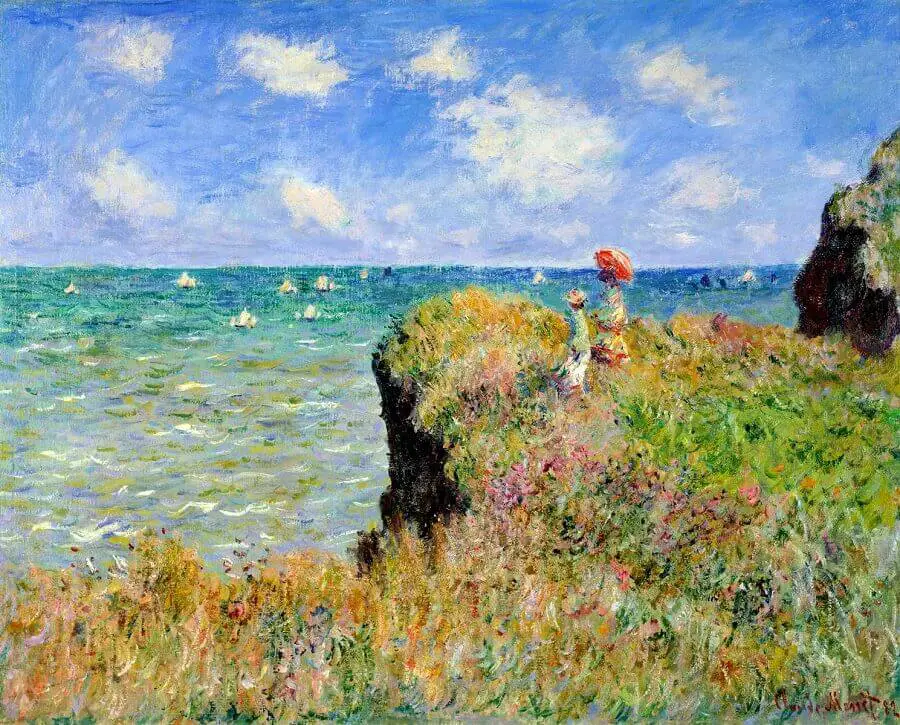
Monet Was The Master Of Light And Color
Monet and his paintings show his ability to master light and color. The impressionist movement is named after Monet, one of the core painters of impressionism.
Monet Was a Master Of Color and Brushstrokes
Monet sought to capture the essence of the natural world in his paintings using solid and bold colors and short brushstrokes. His painting technique was in direct contrast to how people were painting during his time when they blended colors and had an evenness in their painting as in classical art.
Monet With Adovacate of Impressionism Art Movement
Monet was an outspoken advocate for the Impressionism movement; his paintings showed all the values and techniques of the Impressionists. Many other artists used his works of art for their inspiration.
He was an en Plein Air painter who believed in painting outdoors to capture the changing light. To discover more about En Plein air Painting, you can read our blog on All About En Plein Air Painting, What You Need To Know by clicking here.
Monet is one of his most beloved and famous Impressionism artists.
Anita Louise Art is dedicated to art education, great artists, and inspiring others to find and create their art. We love art that uplifts and inspires. #ArtToMakeYouSmile! #ArtToMakeYouHappy!
If you want to see any of my art, you can find out more by clicking here. If you are interested in what inspires me and my paintings, you can discover more by clicking here.
We have a free newsletter and would love you to be part of our community; you can subscribe to the newsletter by clicking here. If you have any questions, I would be happy to talk to you anytime. You can reach me, Anita, by clicking here.
Subscribe to our Anita Louise Art YouTube Channel with great videos and information by clicking here.
Join us for our podcast “5 Minutes With Art.”Spend 5 minutes a week with us to discover and learn about great art and artists. You can find out more about our podcast by clicking here.
Frequently Asked Questions
Who was Claude Monet, and what is he best known for?
Claude Monet was a French painter and one of the leading figures of the Impressionist movement. He is best known for his landscapes, especially his series of Water Lilies and Haystacks, which exemplify the Impressionist style.
What is Impressionism, and how did Monet contribute to this art movement?
Impressionism is an art movement characterized by capturing the fleeting effects of light and color. Monet was a key figure in Impressionism, known for his emphasis on painting en Plein air and capturing the immediate, changing aspects of nature.
What is en Plein air painting, and why was Monet known for it?
En Plein air refers to painting outdoors, directly from the subject. Monet was a dedicated en Plein air painter, believing that this approach allowed him to capture the true essence of nature and the effects of changing light.
How did Claude Monet’s style differ from other Impressionist painters?
Monet’s style was characterized by bold and vibrant colors, as well as short, visible brushstrokes. His focus on the play of light and atmosphere set him apart, and he often painted the same scene at different times to capture the changing effects.
What are some famous works by Claude Monet, besides Water Lilies and Haystacks?
In addition to his iconic series, Monet’s notable works include “Impression, Sunrise,” “Woman with a Parasol,” “Rouen Cathedral Series,” and “The Houses of Parliament.”
How did Monet’s approach to painting influence the art world of his time?
Monet’s innovative techniques and departure from traditional methods had a profound impact on the art world. His emphasis on capturing the essence of a scene rather than intricate details paved the way for modern art movements.
Why did Monet focus on capturing the changing light in his paintings?
Monet believed that light was essential in conveying the mood and atmosphere of a scene. His fascination with capturing the ever-changing effects of light on nature became a hallmark of his work.
What challenges did Monet face during his career, and how did he overcome them?
Monet faced financial struggles early in his career, but he persevered and continued to paint. His dedication to his craft eventually led to recognition and success.
How did Monet’s later works, especially the Water Lilies series, differ from his earlier paintings?
In his later years, Monet’s style evolved, and he focused on large-scale, abstract depictions of his water garden. The Water Lilies series showcases a departure from realism and a move towards a more contemplative and immersive experience.
Related Questions
What Was The Impact Of Vincent Van Gogh On The Art World?
Van Gogh used color, form, and emotions in his art. He had a bright palette that was individualized for his time. Even though he did not see a lot of success during his life after he died, the impact of his art can be seen in both the Expressionism and Fauvism movements that were taking place in Europe.
By clicking here, you can learn more by reading What Was The Impact Of Vincent Van Gogh On The Art World?
Similarities Of Claude Debussy And Claude Monet
Claude Debussy and Claude Monet are both artists, but one is a musical composer, and the other is an artist. They are both considered Impressionists, and they were not afraid to break from the tradition of their day to create something new. Their work was considered to be a bold change for the days.
You can discover more by reading Similarities Of Claude Debussy And Claude Monet by clicking here.

